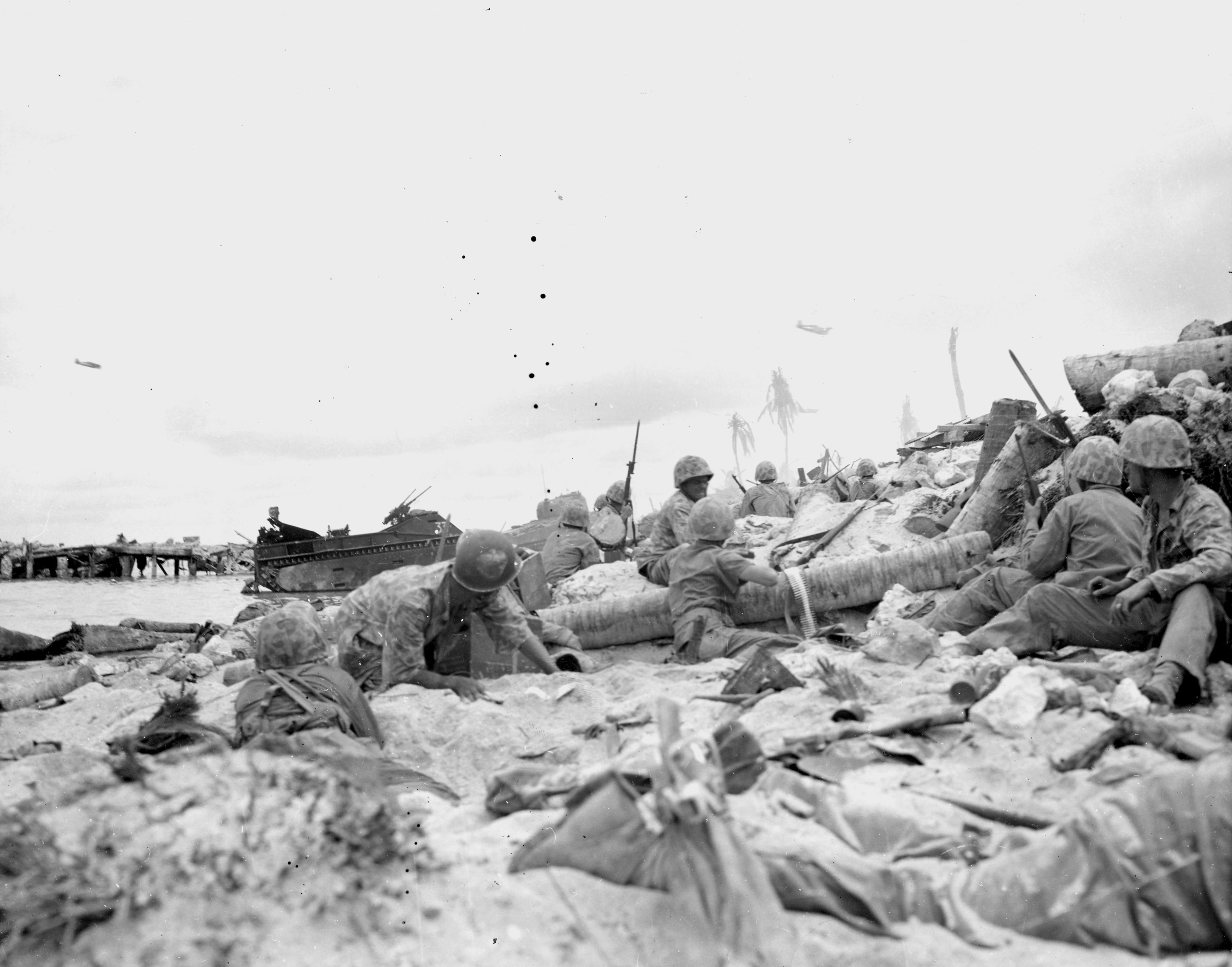“Casualties many; percentage of dead not known; combat efficiency: We are winning.” Seventy-seven years ago Colonel David Shoup’s report to General Julian Smith would enter Marine Corps lore on bloody, bloody Tarawa. The battle would conclude in an American victory, but at a steep cost. The attack on Betio, the largest and southernmost island in the Tarawa atoll, required a direct assault on the beachheads by U.S. Marines. Protected by coral reefs, the flat, small island was one of the most heavily fortified in the Pacific, and because of the island’s geography, the nearly 5,000 Marines would have no immediate room to maneuver. Landing on November 20, 1943, the Marines were met with withering fire, poured out by elite troops of the Imperial Navy’s Special Naval Landing Force, sometimes called “Japanese Marines.” The lethal hailstorm of mortars, machine gun and rifle fire threatened to halt the advance of the Marines. From this precarious position, General Smith radioed General Holland Smith midafternoon stating: “Successful landings on Beaches Red 2 and 3. Toehold on Red 1. The situation is in doubt.” By the end of the first day, the Marines had a tenuous hold on all three landing zones – designated Red 1, Red 2, and Red 3. Corralled onto the narrow beaches, no units had penetrated more than 70 yards inshore and by nightfall, being driven back into the sea was a legitimate threat.
However, by some stroke of luck, the commander of the Japanese garrison, Rear Admiral Keiji Shibakazi, frustrated with his inability to contact his men in the field, ordered his command post to move to the south side of the island. By a twist of fate, a fluke, or skill one of the U.S. destroyers managed to lob a 5-inch shell directly in the commander’s path as he left his concrete blockhouse – instantly killing him and several other senior officers. The death of Shibakazi essentially cut off the head of the Japanese command structure, which is seemingly why the Japanese could not coordinate an early banzai charge. If they had, it is likely that the Americans would have lost their fragile toehold on the beachheads.
Aware of their perilous position as a new day dawned, the Marines fought with extraordinary courage, many fighting despite being wounded several times. The fighting on day two is considered to be one of the toughest battles in Marine Corps history. However, by day three, Japanese resistance had largely collapsed, leaving only rogue snipers and small pockets of fanatical fighters. The Japanese had boasted that it would take a million men and 100 years to take the island. The Marines took it in three days.
––
Since then, it has become the mission of the non-profit organization History Flight to recover the remains of missing American service members on Tarawa. The organization has recovered the remains of 272 individuals since 2015, most recently finding the graves of more than 30 Marines and sailors this past March. History Flight, under contract with the Defense Department, estimates that there are still at least 270 remains to be found.

